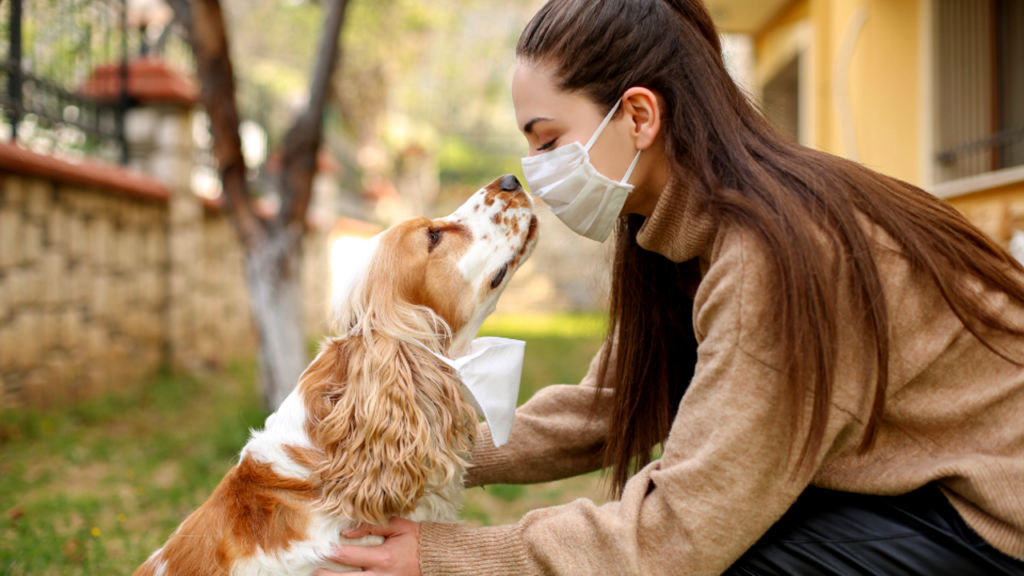
How to Dealing with Pet Allergies
Pets bring joy and companionship to millions of households worldwide, but for some individuals, the presence of pets can trigger allergic reactions. If you find yourself sniffling, sneezing, or experiencing other allergy symptoms around your furry friends, you’re not alone. In this article, we’ll explore effective strategies for dealing with pet allergies so you can enjoy the company of your beloved pets without compromising your health.
Read More: Pet Allergies: Identifying Triggers and Managing Symptoms
Pet Allergies

Pet allergies are a common concern for many individuals who share their homes with furry companions. These allergies can manifest in various ways, ranging from mild discomfort to severe respiratory issues. Understanding the causes, symptoms, and management strategies for allergies is essential for maintaining a healthy and harmonious environment for both pets and their owners.
Understanding Pet Allergies
Pet allergies occur when the immune system reacts to proteins found in pet dander, saliva, or urine. These allergens can become airborne or adhere to surfaces, leading to allergic reactions in susceptible individuals. Cats and dogs are among the most common sources of pet allergens, but other animals, such as rodents, birds, and horses, can also trigger allergies.
Causes of Pet Allergies
The primary cause of pet allergies is the body’s immune system mistakenly identifying harmless proteins from pet dander, saliva, or urine as harmful invaders. This triggers an immune response, leading to the release of histamines and other chemicals that cause allergy symptoms.
Common Allergens
Pet dander, tiny flecks of skin shed by animals, is a primary allergen for many individuals. Additionally, proteins found in pet saliva and urine can also trigger allergic reactions. These allergens can linger in the air and on surfaces, making it challenging to avoid exposure, especially in homes with pets.
Identifying Pet Allergy Symptoms
Pet allergy symptoms can vary from person to person but often include:
- Sneezing
- Runny or stuffy nose
- Itchy or watery eyes
- Coughing
- Wheezing or difficulty breathing
- Skin rashes or hives
In severe cases, exposure to pet allergens can exacerbate asthma symptoms or lead to an asthma attack.
Diagnosing Pet Allergies

If you suspect you have allergies, it’s essential to consult a healthcare professional for proper diagnosis and treatment. Allergy testing, such as skin prick tests or blood tests, can help identify specific allergens triggering your symptoms. A thorough medical history and physical examination are also crucial for accurate diagnosis.
Preventive Measures
While it may be challenging to completely eliminate pet allergens from your home, several preventive measures can help minimize exposure and reduce allergic reactions:
- Designate pet-free zones within your home, such as bedrooms or upholstered furniture.
- Use high-efficiency particulate air (HEPA) filters in your HVAC system and vacuum cleaners to trap airborne allergens.
- Wash your hands and change your clothes after handling pets, especially before touching your face.
- Bathe pets regularly to reduce dander and saliva buildup on their fur.
- Use allergen-proof bedding and covers for mattresses and pillows.
Medication and Treatment Options
Various over-the-counter and prescription medications can help alleviate pet allergy symptoms:
- Antihistamines: These medications can help relieve itching, sneezing, and runny nose caused by allergic reactions.
- Nasal corticosteroid sprays: These sprays reduce inflammation in the nasal passages, relieving congestion and other allergy symptoms.
- Decongestants: Oral or nasal decongestants can provide temporary relief from nasal congestion, but they should be used with caution due to potential side effects.
In severe cases, allergists may recommend allergen immunotherapy, also known as allergy shots, to desensitize the immune system to specific allergens over time.
Living with Pet Allergies
Living with allergies may require some adjustments, but it doesn’t mean you have to give up your beloved pets. By implementing preventive measures, such as regular grooming, cleaning, and maintaining a clean living environment, you can minimize allergen exposure and reduce allergic reactions.
Alternative Pets for Allergy Sufferers
If you’re unable to tolerate common household pets due to allergies, consider alternative pets that produce fewer allergens or are hypoallergenic. While no breed is entirely hypoallergenic, some breeds are known for producing fewer allergens due to their minimal shedding and dander production. Additionally, non-traditional pets like fish, reptiles, or insects may be suitable alternatives for allergy sufferers.
Seeking Professional Help
If pet allergies significantly impact your quality of life, seek guidance from an allergist or immunologist. These specialists can develop personalized treatment plans, offer lifestyle recommendations, and provide emotional support to help you cope with allergies effectively.
The Emotional Impact of Pet Allergies

Dealing with pet allergies can evoke a range of emotions, including frustration, disappointment, and sadness. It’s essential to acknowledge and address the emotional impact of allergies by seeking support from friends, family, or online communities. Remember that prioritizing your health and well-being doesn’t diminish your love for your pets.
FAQs
- How common are pet allergies? Pet allergies are relatively common, affecting up to 30% of people with allergies in the United States.
- Can pet allergies develop later in life? Yes, individuals can develop pet allergies at any age, even if they’ve had pets before without experiencing allergic reactions.
- Are there any completely hypoallergenic breeds? While no breed is entirely hypoallergenic, certain breeds are less likely to trigger allergies due to their minimal shedding and dander production.
- Can pet allergies be cured? While there is no cure for pet allergies, symptoms can be managed effectively through preventive measures, medications, and immunotherapy.
- Is it possible to outgrow pet allergies? Some individuals may outgrow pet allergies over time, but it’s not guaranteed. Allergy symptoms can fluctuate throughout life.
The Final Words
While pet allergies can pose challenges, they don’t have to detract from the joys of pet ownership. By understanding the causes of allergies, implementing preventive measures, exploring alternative pets, and seeking professional guidance, individuals with pet allergies can coexist harmoniously with their furry companions while enjoying a better quality of life.








One Comment